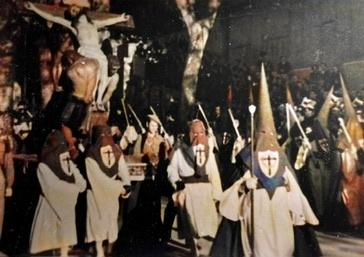How did the Christian Reconquista influence the design and construction of churches in Mallorca?
Similar Topics
christian reconquista
mallorca churches
gothic architecture
romanesque style
cathedral of santa
church construction
religious dominance
architectural transformation
The Christian Reconquista, which culminated in Mallorca’s conquest by King James I of Aragon in 1229, had a profound influence on the design and construction of churches across the island. Following the Christian reclamation from Muslim rule, the newly established Christian authorities sought to assert their religious and political dominance by erecting significant ecclesiastical buildings. Churches were often constructed on or near former Islamic sites, symbolically transforming the landscape and marking the triumph of Christianity. This period marked the beginning of a new architectural era, where Romanesque and early Gothic styles were introduced and adapted to local materials and conditions.
The design of Mallorca’s churches during and after the Reconquista reflected a combination of defensive and spiritual needs. Many churches featured sturdy, fortress-like qualities, with thick walls and limited windows, as the island still faced threats from piracy and occasional conflict. The Cathedral of Santa Maria of Palma, known as La Seu, is the most striking example of this influence: begun in the 13th century, it incorporates Gothic elements that emphasize verticality, light, and grandeur, serving both as a place of worship and a testament to Christian authority. The use of pointed arches, ribbed vaults, and flying buttresses signaled a departure from the previously dominant Islamic and Romanesque styles, showcasing the new artistic and theological ideals brought by the conquerors.
Furthermore, the church construction in Mallorca during this period was closely tied to the reorganization of the island’s social and political fabric. As the Christian rulers distributed land and privileges to settlers from Catalonia and other regions, church-building became a community effort that fostered a renewed religious identity. Parish churches were carefully situated to serve the newly established towns and rural communities, often characterized by simple, functional designs that emphasized the local baroque and Gothic styles developed during subsequent centuries. This architectural transformation was not only about aesthetics; it was a deliberate cultural project that helped solidify the Christian presence and facilitated the integration of Mallorca into the broader Christian kingdom.
In summary, the Christian Reconquista deeply influenced church design and construction in Mallorca by introducing Gothic architectural elements and reinforcing the church’s role both as a place of worship and a symbol of Christian victory. The resulting buildings combined spirituality, strategic defense, and community cohesion, reflecting the complex historical changes that reshaped the island during this transformative era.
The design of Mallorca’s churches during and after the Reconquista reflected a combination of defensive and spiritual needs. Many churches featured sturdy, fortress-like qualities, with thick walls and limited windows, as the island still faced threats from piracy and occasional conflict. The Cathedral of Santa Maria of Palma, known as La Seu, is the most striking example of this influence: begun in the 13th century, it incorporates Gothic elements that emphasize verticality, light, and grandeur, serving both as a place of worship and a testament to Christian authority. The use of pointed arches, ribbed vaults, and flying buttresses signaled a departure from the previously dominant Islamic and Romanesque styles, showcasing the new artistic and theological ideals brought by the conquerors.
Furthermore, the church construction in Mallorca during this period was closely tied to the reorganization of the island’s social and political fabric. As the Christian rulers distributed land and privileges to settlers from Catalonia and other regions, church-building became a community effort that fostered a renewed religious identity. Parish churches were carefully situated to serve the newly established towns and rural communities, often characterized by simple, functional designs that emphasized the local baroque and Gothic styles developed during subsequent centuries. This architectural transformation was not only about aesthetics; it was a deliberate cultural project that helped solidify the Christian presence and facilitated the integration of Mallorca into the broader Christian kingdom.
In summary, the Christian Reconquista deeply influenced church design and construction in Mallorca by introducing Gothic architectural elements and reinforcing the church’s role both as a place of worship and a symbol of Christian victory. The resulting buildings combined spirituality, strategic defense, and community cohesion, reflecting the complex historical changes that reshaped the island during this transformative era.
🧩 Related Questions
Related Question
In what ways do traditional terraces, or bancales, contribute to rainwater management in Mallorca?
Related Question
Are there any family-friendly activities specifically available at the beaches near Alcudia?
Related Question
What are some key differences between the Mallorcan dialect and standard Catalan?
